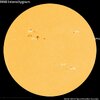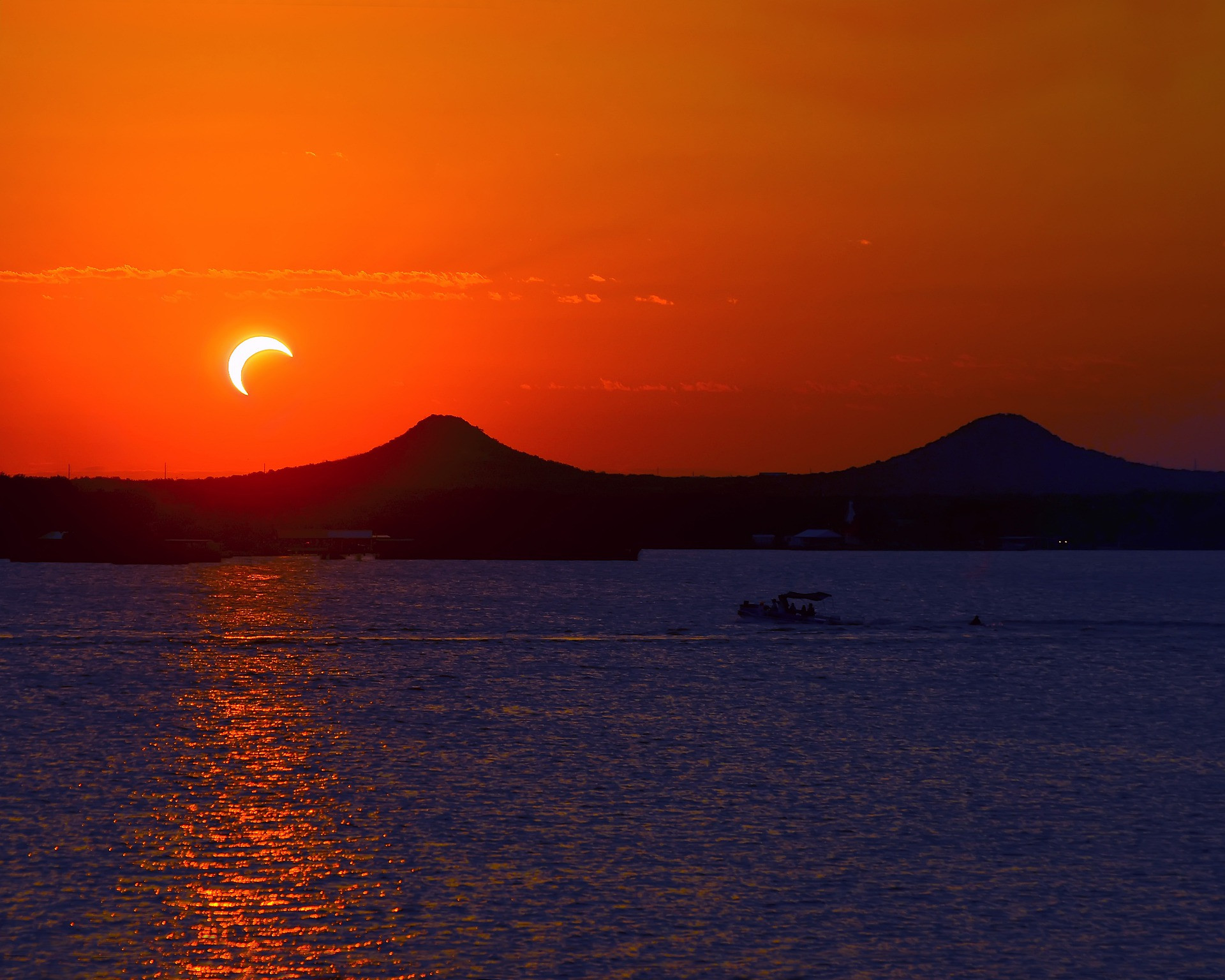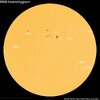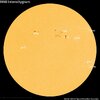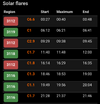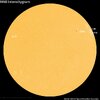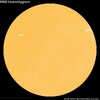From the abundance of acorns in the fall to the bushiness of squirrel tails, there are many fanciful forecasting techniques have been used over the years as a means to glean a glimpse of what the weather will be like in the upcoming winter.
AccuWeather's approach to concocting the winter forecast, one of its most highly-anticipated seasonal outlooks, is a bit different: The process involves a team of veteran long-range forecasters analyzing computer models, looking at how previous winters have played out and using their own personal experience to determine if it's going to be a snowy winter, if and when the polar vortex will unleash Arctic air across North America and whether it will be a good season for skiers.
This winter is indeed looking like a snowy one across most of the northern tier of the contiguous United States, but AccuWeather senior meteorologist Paul Pastelok says
, there is more to the forecast than just snowstorms.
Pastelok and his team of long-range forecasters are predicting a "triple dip
La Niña," as it is the third winter in a row that La Niña will shape the weather patterns across the U.S. The regular climate phenomenon occurs when the water near the equator in the eastern Pacific Ocean is cooler than average, which in turn influences the jet stream and the overall weather patterns in North America. Despite what will be the third La Niña winter in a row, this winter will not necessarily be a carbon copy of the past two.
"These third-year La Niñas are very tricky," Pastelok said, with no two La Niña winters being exactly the same. The weather setup will be one of the most complicated and dynamic in recent memory due to all of the weather factors in play over the upcoming months, Pastelok said.
One of the more unusual factors that could influence the overall weather patterns this winter can be traced back to a cataclysmic volcano eruption that took place in the early weeks of 2022. The volcano spewed an unprecedented amount of debris high into Earth's atmosphere which, as Pastelok will explain, could still be having an effect on the weather on a global scale.
With this in mind, AccuWeather is ready to make its annual prognostication and unveil a detailed region-by-region breakdown of the U.S. winter forecast as well as seasonal snowfall predictions for six of the nation's biggest cold-weather cities:
Severe weather to follow hurricane season in Southeast
A mild winter is in the forecast for most of the southeastern U.S., but it's not the air temperature that AccuWeather meteorologists are keeping a close eye on. Instead, it's the water temperature in the Gulf of Mexico and along the Atlantic Seaboard that has meteorologists' attention.
"The water temperatures are going to have a big impact going forward this season," Pastelok said.
In addition to fueling an
active final stretch of the Atlantic hurricane season, which officially lasts through Nov. 30, the warm waters off the coasts of the Southeast will promote frequent storms and downpours across the region as the autumn fades into winter.
Some heavier rain events will be possible across the Gulf Coast states and into the Tennessee Valley from December into February, including the risk for some severe weather, Pastelok said.
Severe weather as a whole decreases across the U.S. during the winter months, but it can still be disastrous across the Southeast during this time of year. Last December, a catastrophic severe weather outbreak spawned tornadoes in nine states,
causing 76 fatalities and $18 billion in damage just before the start of the holiday season. In 2012,
a tornado outbreak across Louisiana, Mississippi and Alabama on Christmas Day spun up 34 twisters and 84 damaging wind reports and cut power to families as they tried to celebrate the holiday with their friends and families.
Hazards of a different and more traditionally winter variety could also develop this season. Last year, there were several snow events across the region that blanketed some southern cities.
Huntsville, Alabama, measured 5.2 inches of snow last winter, more than double the annual average of 2.4 inches.
The best opportunity for snow or wintry precipitation across the interior Southeast will arrive in January and early February with one or two snowfall events possible in this timeframe. This is lower than last winter when there were four occasions on which snow accumulated across the region.
Pastelok added that if the water in the Gulf of Mexico and along the Atlantic coast remain warmer than usual, there is the chance for a "potentially big system" to develop during the second half of the winter that could impact the East Coast.
As for Floridians and reptilian inhabitants of the Sunshine State, the pushes of frigid air that do make it to the Southeast might come short of intruding deep into central or southern Florida.
In recent winters, there have been cold spells in Florida that sent the mercury dipping down into the 30s and 40s F, enough to cause frost and freeze in the typically warm state, which can endanger some of the state's temperature-sensitive citrus crops. Temperatures this low can also cause the
cold-blooded iguanas that reside in Florida to become temporarily stunned by the cold to the point that they appear dead before the warmth reanimates the reptiles.
Pastelok said that the chance of a widespread frost or freeze is low this year, but if it does occur, it will likely take place in late January.
Will snow shovels gather dust in Northeast, Midwest?
A wave of chilly air swept across the Northeast and Midwest just in time for the arrival of astronomical autumn, which started on Sept. 22, but the arrival of astronomical winter on Dec. 21 may not start in a similar fashion.
Residents across the Northeast and Midwest will experience a few winter previews in November and December as waves of cold air dive down from Canada, but the biggest blasts of cold air will hold off until later in the winter. The clash of cold air with lingering warmth could spark an out-of-season severe weather event in the Midwest or Ohio Valley late in November or in December.
These atmospheric ingredients will also be present to generate some early-season snow, but this will not be an indicator of how the entire winter will play out, but instead
, the start of a bookend winter in terms of snowfall.
"I think going forward, even though we're in the La Niña [phase], it may be just too mild at the middle part of the season to get a lot of frequent [snow] events," Pastelok explained.
Snowfall for the season as a whole is likely to be below normal for most of the central Appalachians, Ohio Valley and interior mid-Atlantic, but precipitation could end up above normal with a few all-rain events likely to unfold throughout the winter.
Lake-effect snow will be less prolific in the eastern Great Lakes, including areas around
Buffalo, New York;
Erie, Pennsylvania; and
Cleveland. Farther west, near- to above-normal lake-effect snow is expected.
Outside of that region, New England is one of the only areas east of the Rocky Mountains where snowfall could end up being above normal. The snowfall totals will be boosted by a few nor'easters, with January and March bringing the highest chances of powerful coastal snowstorms.
Boston may end up being the only major city along the Interstate 95 corridor that finishes the winter with near-normal snowfall. AccuWeather long-range forecasters are predicting that 40 to 50 inches will accumulate in the city, around the average snowfall amount of 49.2 inches. Last winter, Boston finished the season with 54 inches of snow with 23.5 inches falling during a blizzard on Jan. 29.
In cities such as
Washington, D.C., the emphasis is not on how much snow will fall, but on how often snow makes an appearance. Last January, accumulating snow was observed on just four days throughout the month, amounting to 12.3 inches. This accounted for 93% of all of the snow that fell in the nation's capital throughout the entire winter.
This winter, AccuWeather is predicting that Washington, D.C., will experience accumulating snow on only three to five days throughout the season with total accumulations amounting to 6 to 10 inches, just below the average of 13.7 inches.
Even when it does snow during the week, the impacts on daily routines may not be the same as they were a few years ago.
Skipping Down
AccuWeather is forecasting seasonal snowfall totals of 18-23 inches for
New York City this coming winter and 14-20 inches for
Philadelphia, both of which would be below average for those cities.
Polar vortex may unleash late-season Arctic surge in Central US
AccuWeather meteorologists are predicting that most of the contiguous U.S. will experience a mild start to winter, but some of the warmest weather throughout December could be focused on the central Plains.
Temperatures throughout the final month of 2022 are forecast to run about 3 degrees Fahrenheit above normal across part of the nation's midsection, including areas around
Oklahoma City, Oklahoma
. The warmth will extend south across the border to places like
Lubbock and
Amarillo, Texas, as well as to the north and west as spots like
Dodge City and
Wichita, Kansas, and
Denver could have above-normal temperatures.
The mild start to the winter will not necessarily be indicative of what is foreseen to unfold across the region after the calendar flips to 2023.
One of the biggest players in the central U.S. this winter will be the
polar vortex, a large pocket of frigid air that typically resides in the vicinity of the Arctic Circle. Occasionally, the polar vortex over the North Pole is displaced and can dive southward across a large swath of the U.S., unleashing the coldest air of the entire winter across dozens of states. In the northern Plains, this can result in AccuWeather RealFeel® Temperatures plummeting toward 50 degrees below zero.
Pastelok said that February is the month to watch for the polar vortex to usher in brutally cold Arctic air across the Rockies and most of the central U.S. and, in response, cause the energy demand across the regions to surge.
"The last two Februarys have featured significant cold waves for the central and southern Plains," Pastelok said. "There is a chance once again on this third La Niña winter, that cold air reaches this region." He added that if there is enough of the central U.S. is covered in snow, the strongest push of Arctic air could result in a frost or freeze in southern Texas.
Around the same time that the coldest air of the season freezes the Plains, AccuWeather meteorologists say, the overall track of storm systems across the U.S. could change.
The new storm track during the second half of the winter will focus on the eastern Plains and mid-Mississippi Valley, but bouts of heavy snow, and even blizzard conditions, cannot be ruled out on the northern and western sides of these storms.
As disruptive as the storms may be to travel and the normal daily routines of millions of people across the region, any precipitation, both liquid and frozen, will be welcomed across the central Plains.
Extreme drought conditions were present across New Mexico and western Texas at the start of the summer. The dryness concerns have eased in these areas in recent months, but pockets of extreme and exceptional drought have developed elsewhere in the region, including Nebraska, Kansas and Oklahoma. The late-winter storms could help alleviate the severity of the drought heading into the spring when farmers begin to prepare to plant their annual crops.
West Coast storms may do little for long-term drought
The triple-dip La Niña expected this winter is just the second of its kind in recent history, joining the winter of 2000-2001 as the only winters where the climate phenomenon persisted for so long. Despite the weather pattern shaping up in a similar matter as it has the past two years, Pastelok warns that this winter "will be a little different from last year, as far as the primary storm track across the West Coast."
Last winter started on a stormy note for most of California, Oregon and Nevada with storms in October and November delivering some early-season rain and blanketing ski resorts with snow. As the calendar turned to December, the storm track shifted northward, directing the rain and mountain snow toward Washington and British Columbia, Canada. A repeat of last winter's early-season storms is unlikely, according to long-range forecasters.
"Unfortunately, we have bad news as far as the drought goes in parts of California, Nevada and the Southwest," Pastelok said. "The main storm track will be even farther north than it was the first half of the winter season last year including the late fall."
As of Tuesday, Sept. 20, 74% of the western U.S. was experiencing at least a moderate drought, 18% was experiencing extreme drought, and there were pockets of exceptional drought -- the most severe of drought categories -- in California's San Joaquin Valley, central Oregon and central Utah. Drought conditions could become worse in some regions of the West with the winter forecast to begin on a dry note
The anticipated winter pattern will not necessarily mean a parade of non-stop storms for Washington, Oregon and Idaho, as Pastelok explained that the primary storm track will focus more on western Canada.
"We're not looking for the type of year that we had last year with these very, very long periods of heavy rain and snow across California, northern California and the Northwest," Pastelok said. "But we can see some moderate systems and occasionally one bigger period where it does get hit hard in the Northwest."
Central and Southern California still have a chance to receive beneficial rainfall and mountain snow this winter, but the storms are likely to hold off until after the start of 2023. This is different from 2022 when the middle part of the winter season in California turned drier then stormy again in the spring.
The La Niña phase is projected to weaken during the second half of the winter, which may open the door for storms to take a more southerly track into California, rather than focusing on the Pacific Northwest and western Canada. This will present the best opportunities for rain in
Los Angeles and
San Diego, but even still, it will be far from enough to completely erase the long-term drought across the Southwest.
Excellent ski conditions predicted for popular resorts
Skiers and snowboarders across the West Coast who are awaiting the first opportunity to hit the slopes may want to consider traveling to the Cascades or the Rockies as resorts in these mountain ranges are projected to have the best of the early-season ski conditions.
Resorts in Central and Southern California, as well as Arizona and Utah, may be slow going early in the winter before natural snow picks up during the second half of the winter -- the exact opposite of what unfolded at the start of last winte
Pastelok added that it should be a good year for the popular ski resorts across Colorado, but it might not necessarily be a banner year.
Ski resorts on the other side of the country may end up relying on artificial snow rather than natural snow this winter with below-normal snowfall in the forecast for the spine of the Appalachians from northern Georgia through Pennsylvania. Spells of colder weather during the early part of the ski season could help the resorts that are able to generate their own snow.
Better conditions are anticipated at ski slopes in New York and across New England where more frequent snow is anticipated. Resorts in Vermont and New Hampshire could end up being the best places to ski this winter across the eastern U.S. due to a boost from natural snowfall
Volcano fallout a year later could factor into winter weather
La Niña will not be the only meteorological force at play that could shape the weather patterns across the U.S. during the upcoming winter.
On Jan. 15, 2022, the Hunga Tonga-Hunga Ha’apai volcano, an underwater volcano located about 2,200 miles northeast of Sydney, Australia, erupted in grand fashion, sending a significant plume of gas, ash and water vapor high into Earth’s atmosphere.
The fallout from the eruption towered through the troposphere, the lowest layer of the atmosphere where most weather occurs, and reached into the stratosphere.
This “once-in-a-lifetime” eruption was so powerful that it sent shockwaves around the world and caused the amount of water vapor in the stratosphere to increase by around 5%,
according to a recent report by The Associated Press.
This satellite image made by the Japanese weather satellite Himawari-8 shows the eruption of the Hunga Tonga-Hunga Ha’apai undersea volcano at the Pacific nation of Tonga on Saturday, Jan. 15, 2022. (Japan Meteorology Agency via AP)
“Volcanic eruptions rarely inject much water into the stratosphere,” NASA said. “
The sheer amount of water vapor could be enough to temporarily affect Earth’s global average temperature.”
Pastelok added that unlike volcanic ash, which reflects sunlight, the water vapor acts like a blanket and keeps warmer air trapped underneath. “Instead of cooling the surface, the reaction could be more warming. That could be one of the factors involved and we could see that hang over into the winter,” Pastelok said.
Specifically, the lingering water vapor from the January eruption could indirectly help to fortify the polar vortex over the North Pole, preventing it from dipping down across North America. However, the jury is still out on whether or not the volcanic fallout will indeed have a significant impact on the winter forecast or other seasonal forecasts in the future.
Pastelok concluded by saying that the research is still ongoing and that there is lower confidence that the aftermath of the eruption will have a big impact on the winter forecast.


